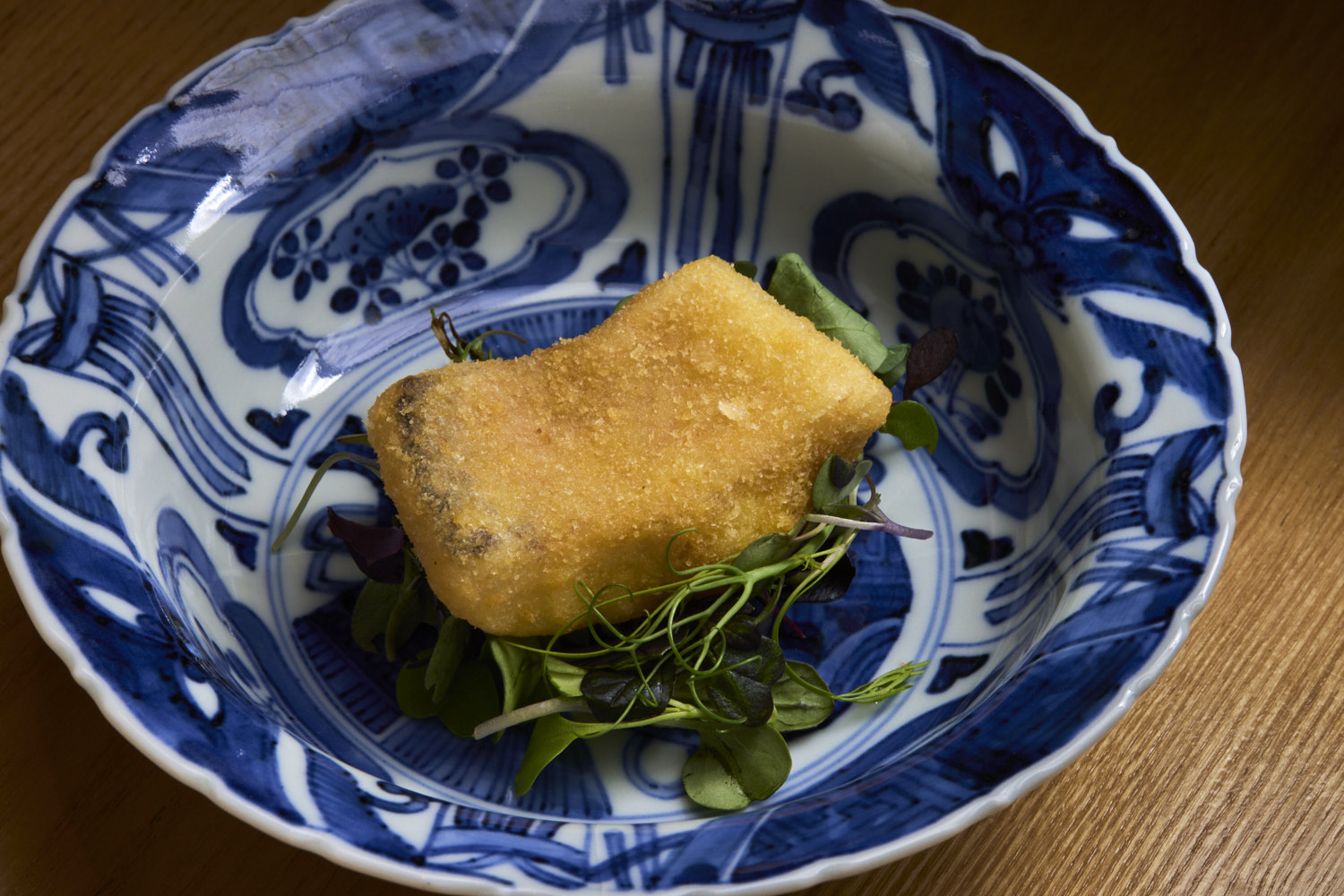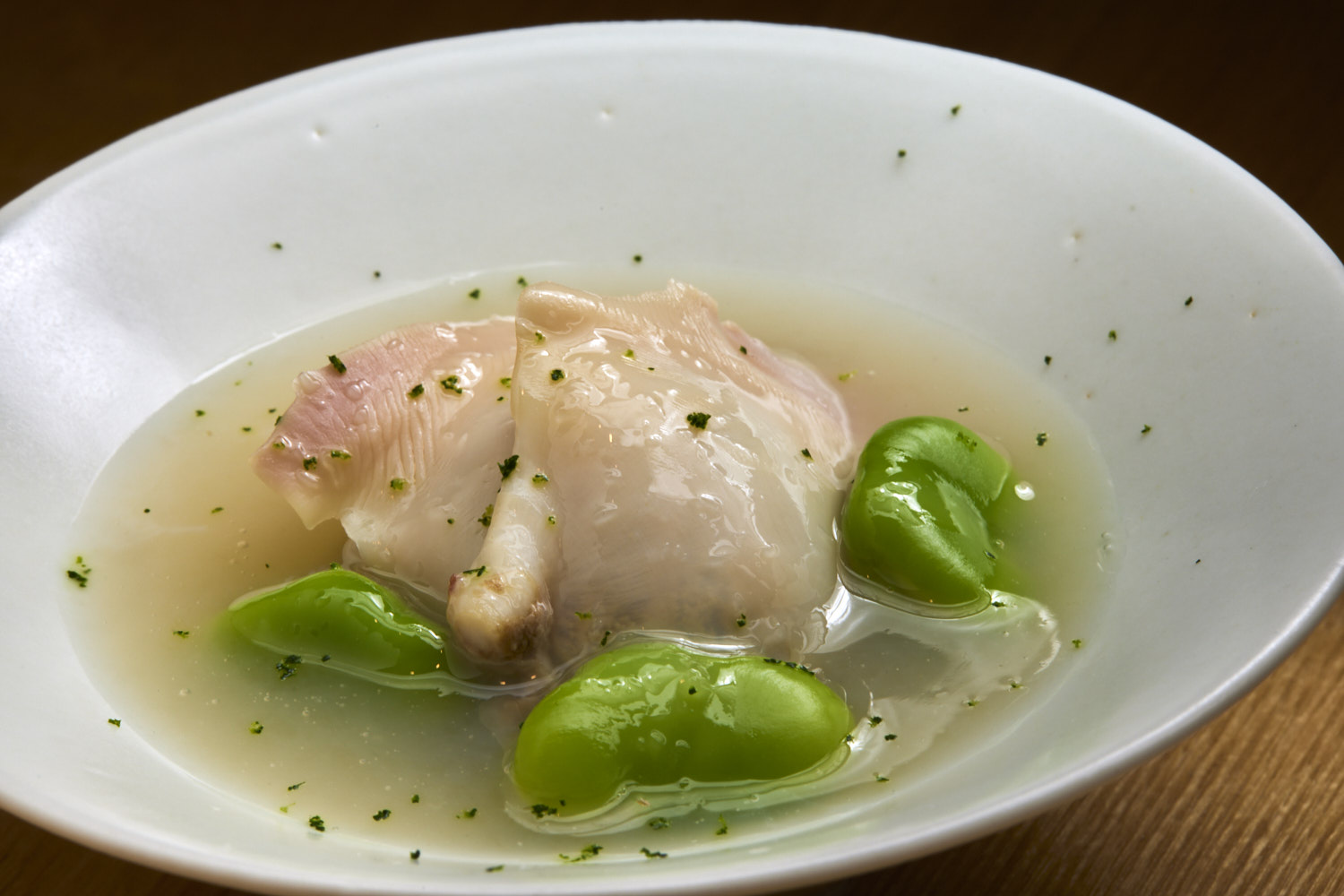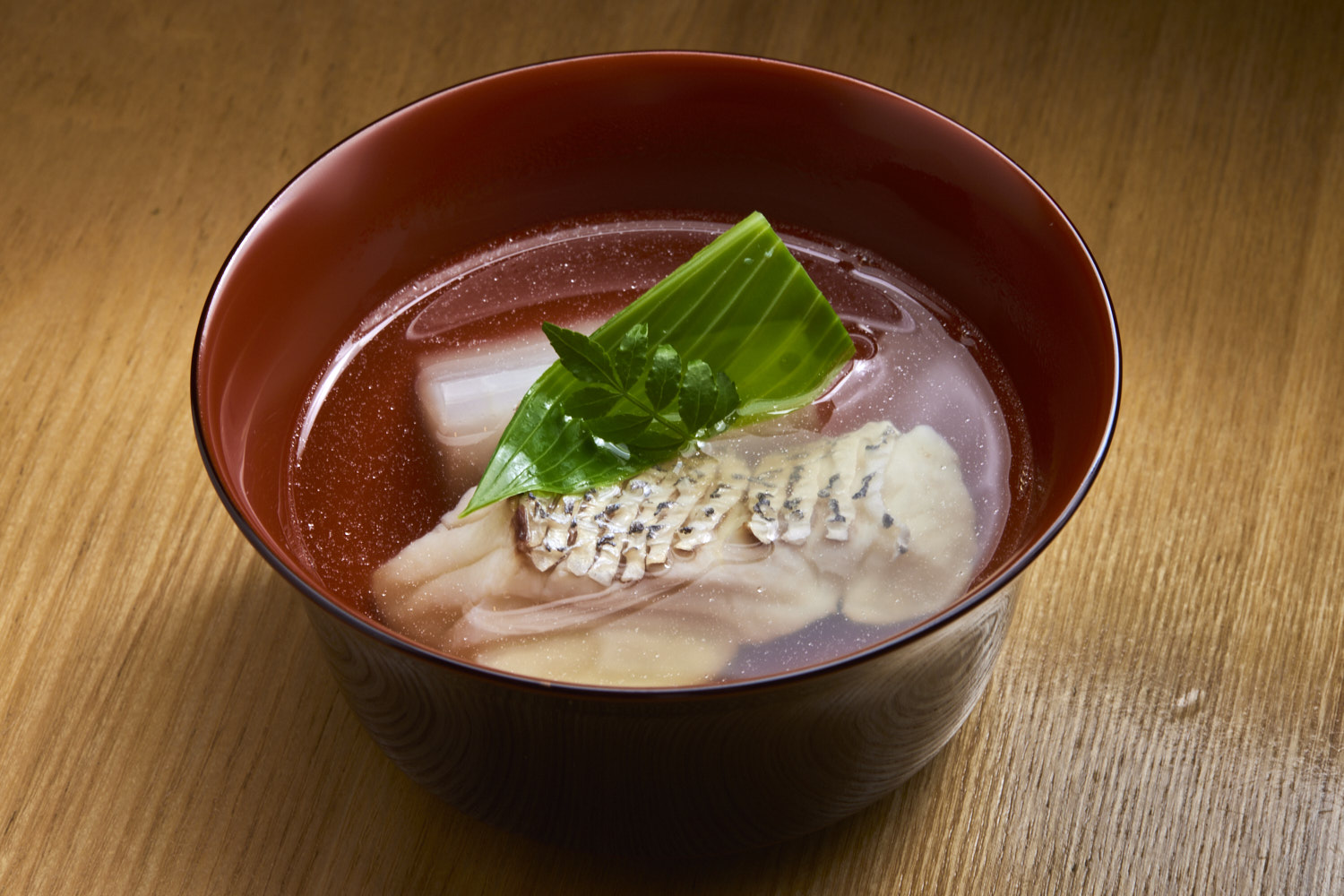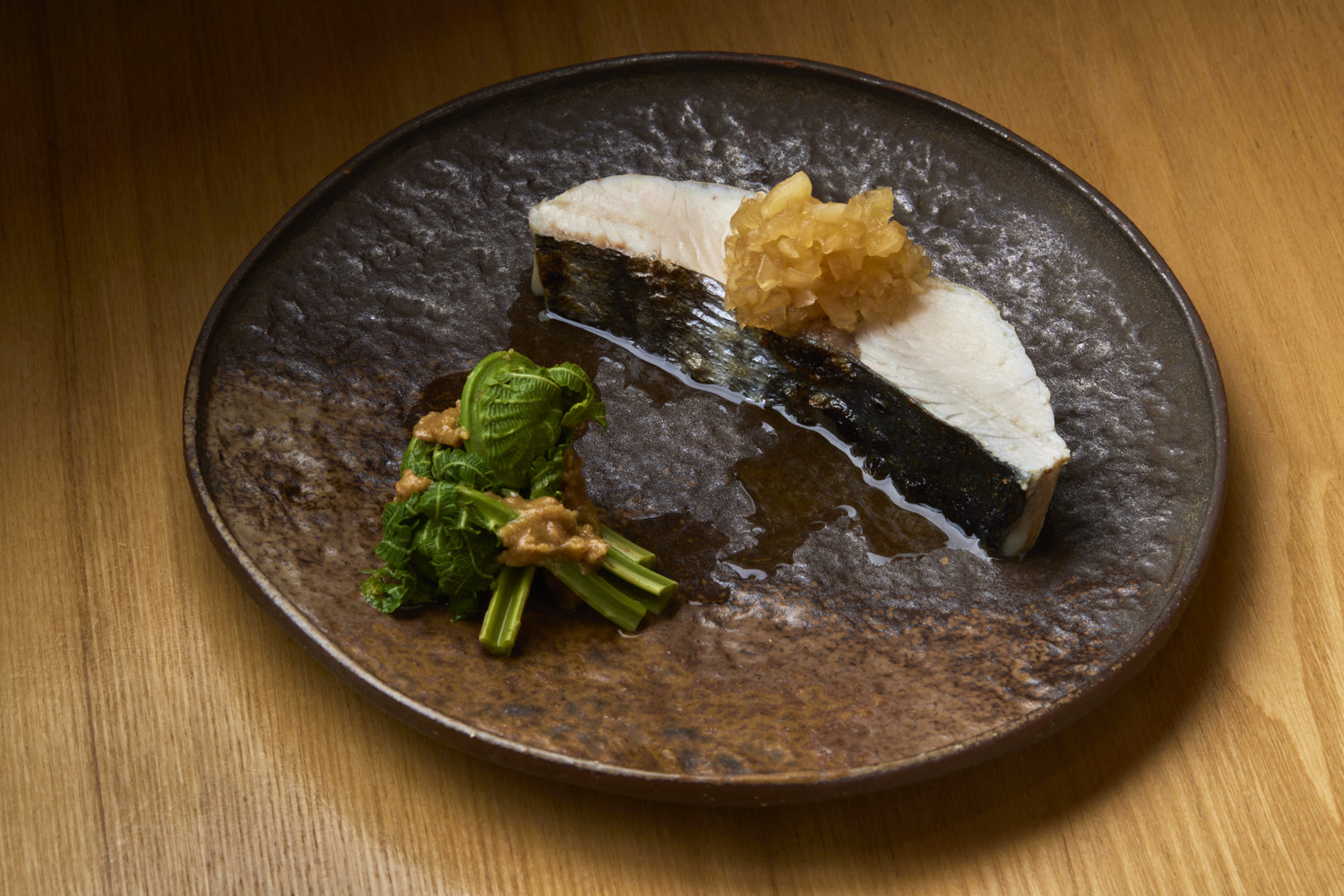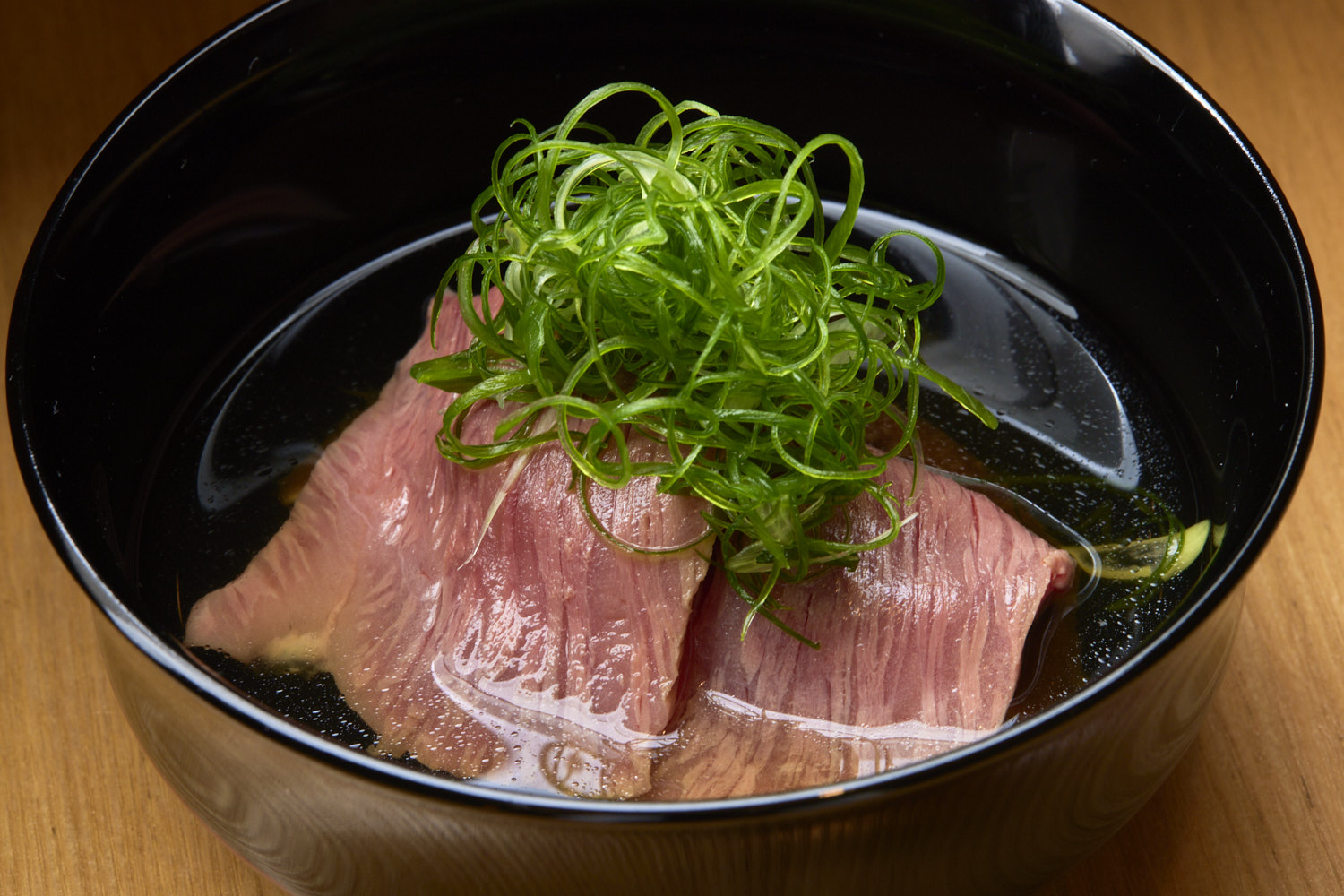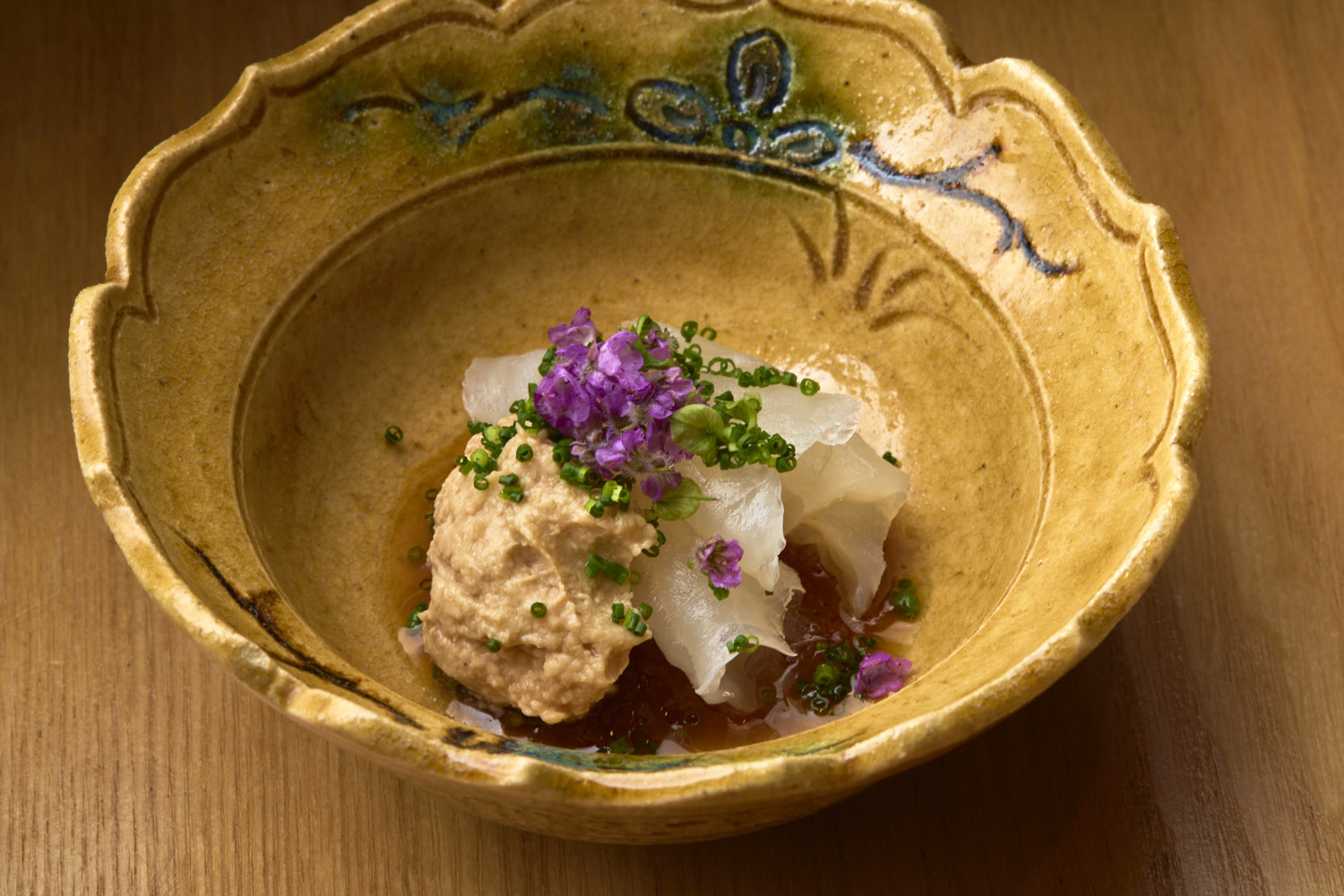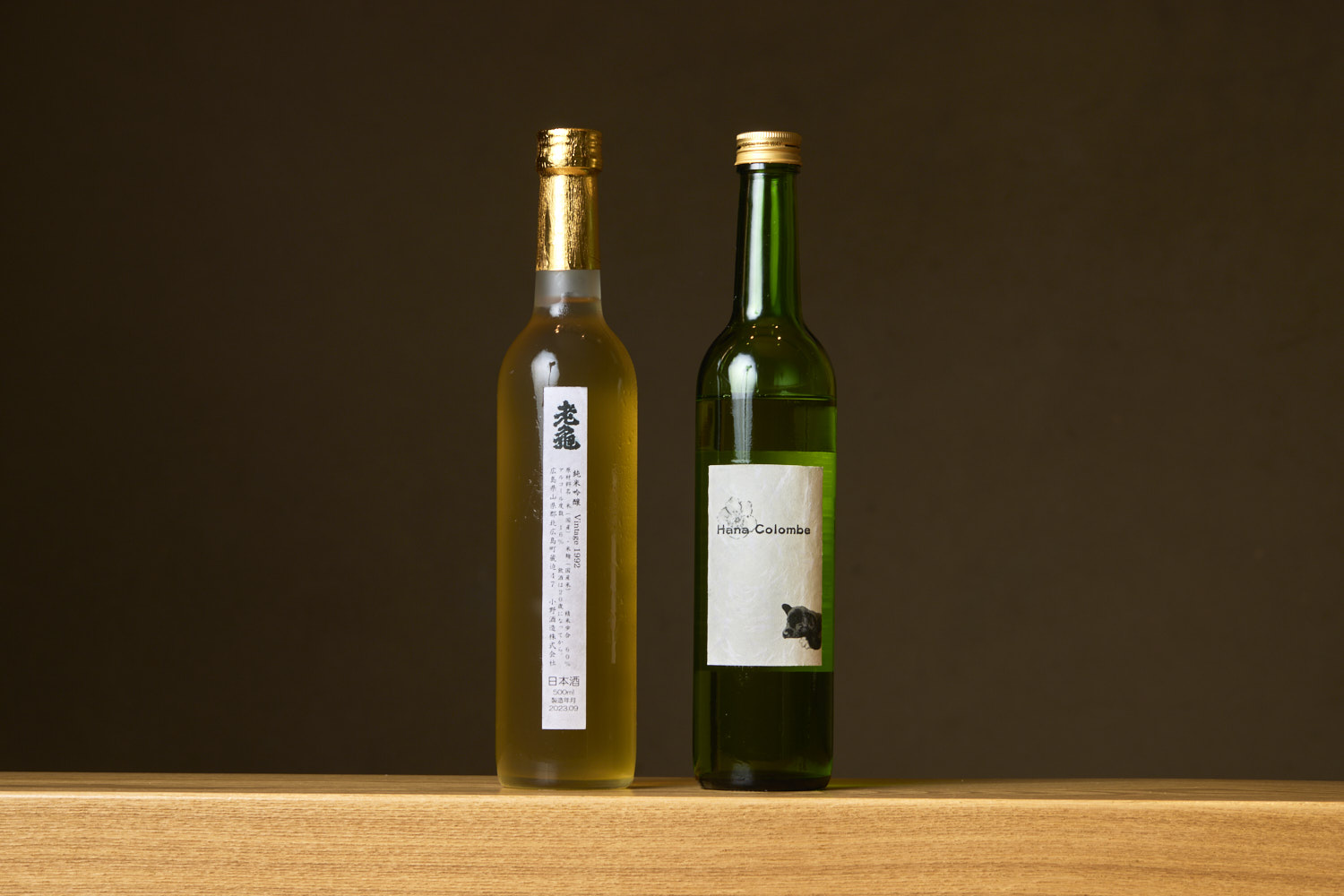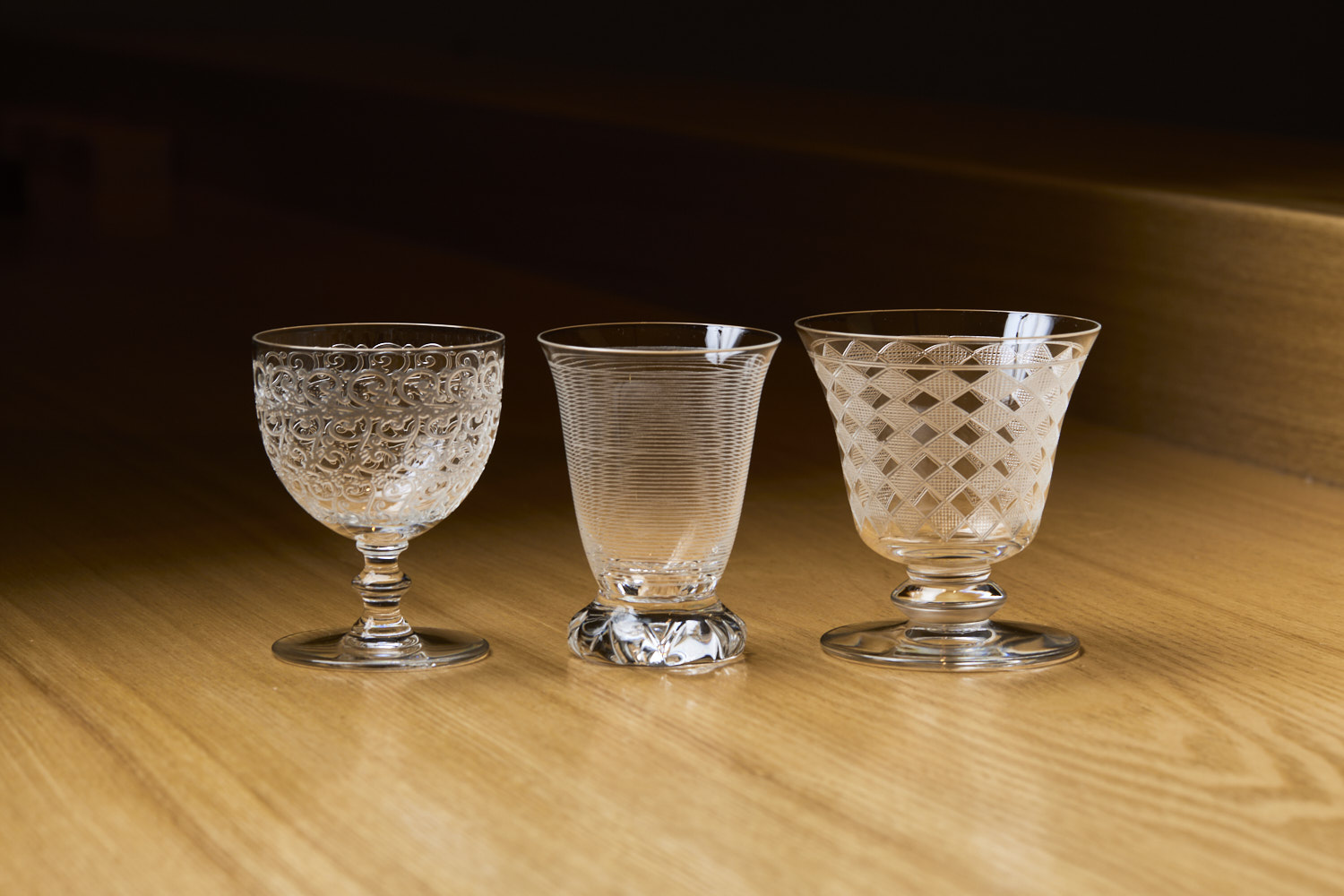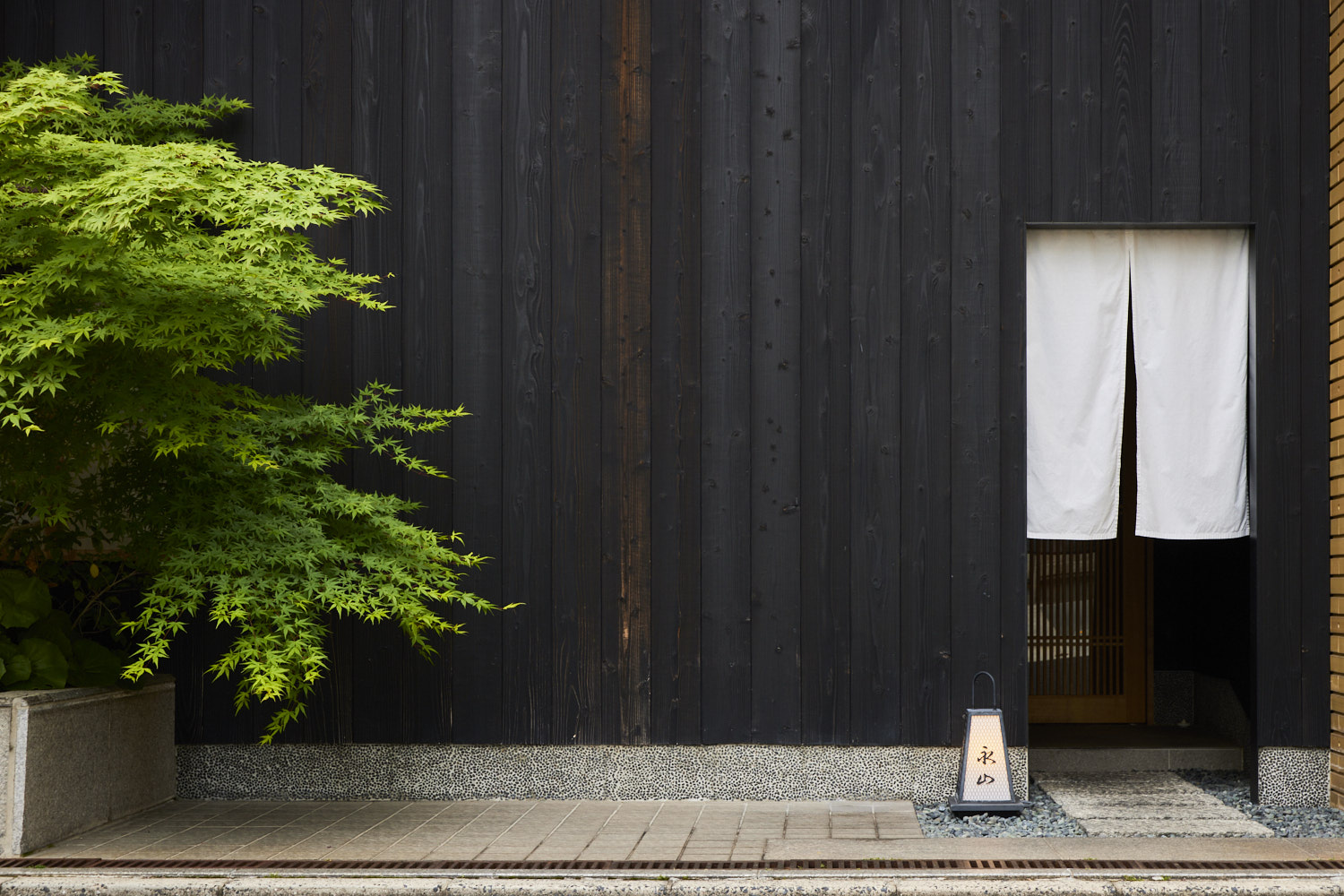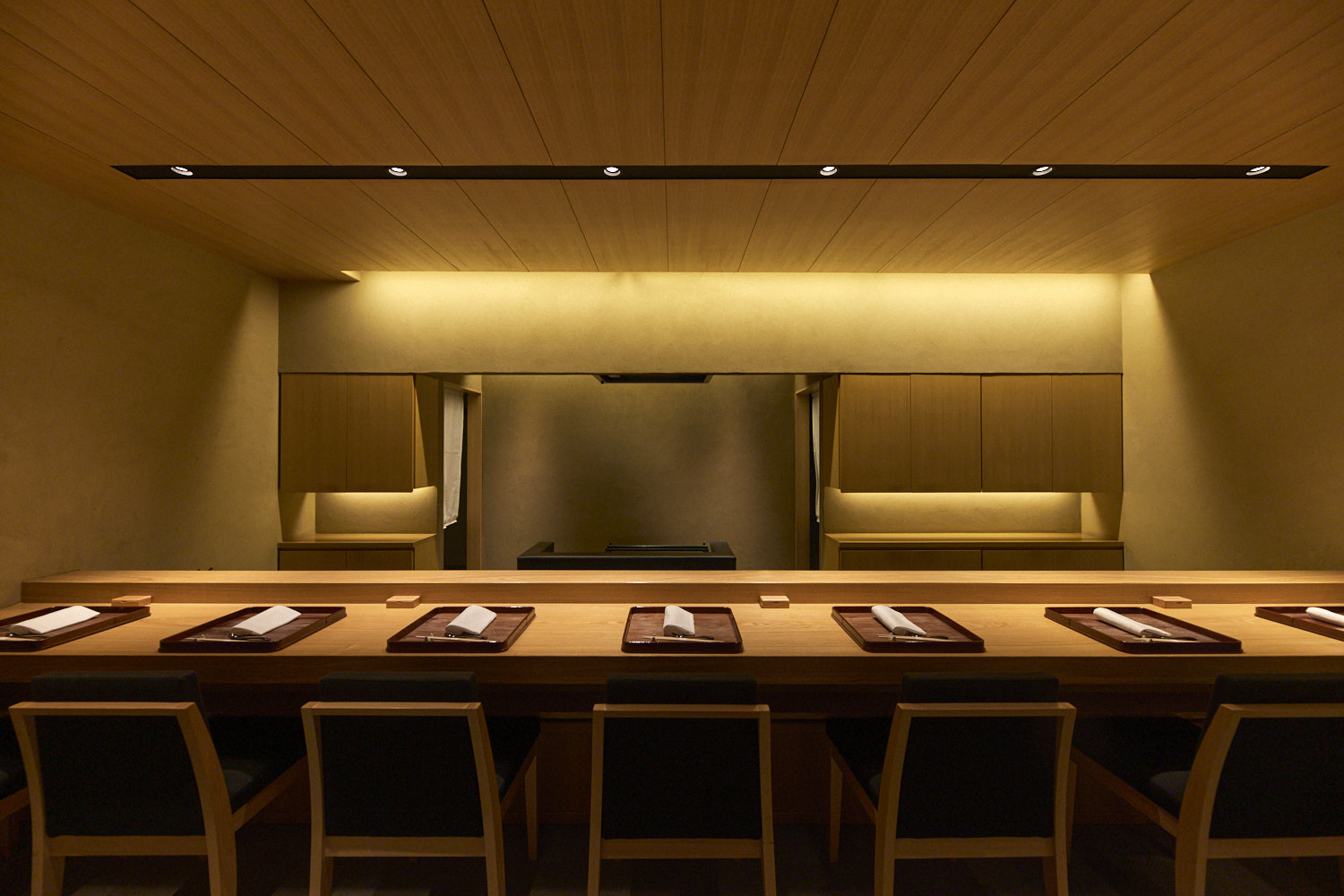
Hiroshima
Eizan
永山
In the heart of Hiroshima, Eizan delivers an intimate experience of Japanese craftsmanship. After eight formative years at Tokyo’s acclaimed Seizan, Chef Kotaro Masunaga returned to his hometown to open a Japanese restaurant that reflects both his refined technique and his reverence for local ingredients. From wild red sea bream to Sakakiyama wagyu beef, the omakase menu draws from the bounty of the Seto Inland Sea and western Japan, with each course highlighting the richness of the season.
Eizan opened its doors in 2019 in a quieter neighborhood near the city center. Built to display the interaction between architecture and nature, its black façade is framed by seasonal foliage—lush and green in summer, vivid with autumn reds. Inside, the space is austere but warm, with eight counter seats carved from solid wood and a small private room that seats up to four people. From the counter, guests can watch the charcoal grill in action, where fresh local fish are prepared over an open flame.
The restaurant takes its name from a pairing of characters: one from Masunaga’s own surname, and the other from that of his mentor, Haruhiko Yamamoto of Seizan. The signboard and lantern at the entrance are lettered in Masunaga’s own brushstrokes. Also an avid collector of tableware, he often visits antique shops in Kyoto in search of new pieces. His growing collection ranges from 1920s Sèvres crystal glasses to mid-century Baccarat, as well as antique and contemporary ceramics from Japanese artists.
CUISINE
Highlighting the richness of the season
At Eizan, the menu evolves with the seasons, highlighting fresh ingredients from the Seto Inland Sea. The nine-course tasting is constructed with the similar rhythm as a traditional kaiseki meal—appetizer, soup, sashimi, grilled and simmered dishes and dessert—but interpreted with a lightness that reflects Masunaga’s philosophy. Seasonings are used sparingly; the focus is on drawing out the natural essence of each ingredient.
Thanks to the proximity to the coastline, the seafood here is of exceptional freshness, the chef says. The day’s soup features wild red sea bream from the local shores. The broth, made from the fish’s bones, is clear and deeply savory, with a warmth that seems to settle into the body. The day’s sashimi is fresh filefish from Hiroshima, dressed in a gently emulsified liver sauce. The dish pairs beautifully with dry sake.
A seasonal course of Kashima clams arrives paired with broad beans, the clam dashi reduced into a velvety paste. Tilefish, deep-fried to a crisp shell, reveals its inherent sweetness and depth of flavor. Spanish mackerel is cooked simply and served with new onions, their natural sweetness brought out by soy sauce and heat.
While Eizan’s seafood is unquestionably the highlight, the meat courses stand on equal footing. Shabu-shabu is made with sirloin from Hiroshima-raised Sakakiyama beef. The broth, a delicate blend of bonito flakes, kombu and vegetable stock, is designed not to overpower but to heighten the natural richness of the beef.
The meal concludes with a seasonal rice course, often featuring local ingredients and simple preparations that allow the grain to shine.
INGREDIENTS
Ingredients come from trusted local producers. Seafood is procured from Yoshibun, a venerable purveyor at the Hiroshima Central Wholesale Market with roots dating back to 1680. Sourced directly from local farms, Sakakiyama beef is selected for its high quality. Raised slowly over time, the beef has a low melting point and a deep, rounded umami, distinguishing it even among Japan’s top wagyu brands.
Vegetables are sourced from Midori, a neighborhood greengrocer, while the rice is a house blend featuring sun-dried grains from Fukui Prefecture. Even the water used in cooking is drawn from local Hiroshima sources, and the salt—Ryujin no Shio—comes from Suo-Oshima in Yamaguchi.
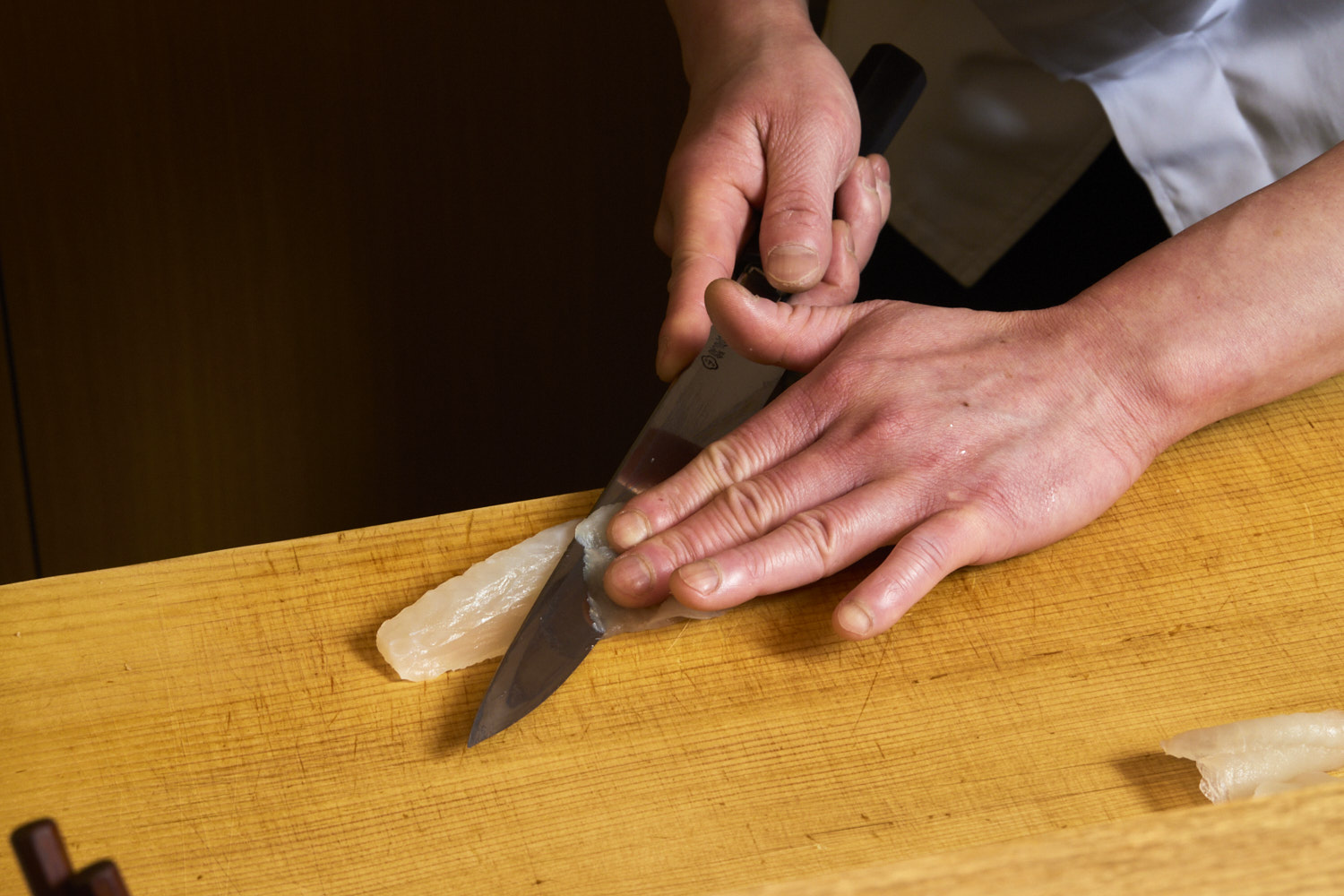
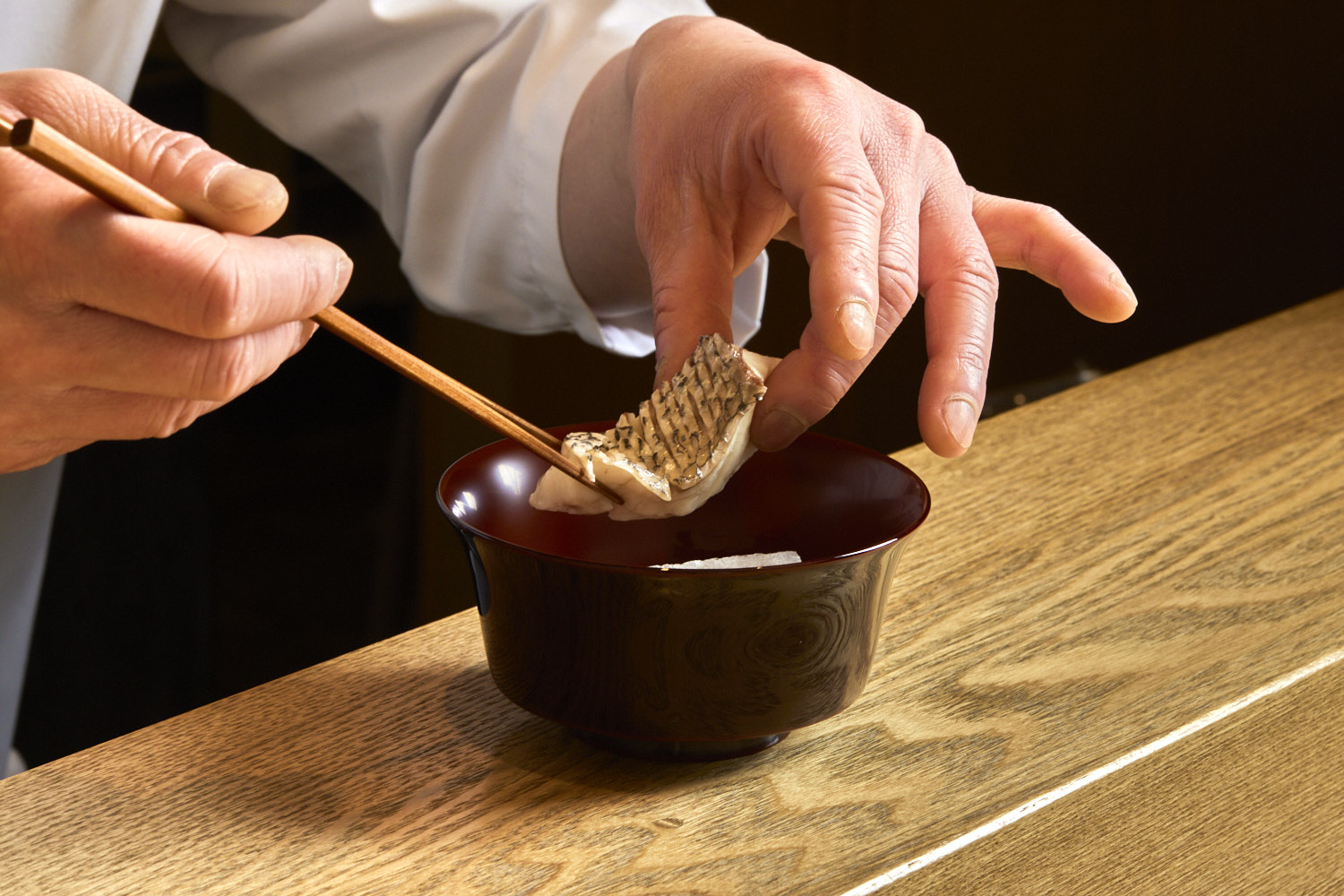
CHEF
Kotaro Masunaga
SAKE & WINE
The beverage menu at Eizan is curated with the same care as its cuisine. Working with a local liquor store, the sake list offers a good mix of Hiroshima vintages and bottles from other regions. Guests are welcome to request local recommendations if they wish to explore the region through their glass. For wine, the focus is on Burgundy and Champagne, offered at their ideal drinking age. Pairings are tailored to the guest’s palate while ensuring they complement the delicate flavors of the cuisine.
Course
- The price includes our booking fee of ¥8,000
- The price includes our booking fee of ¥8,000


